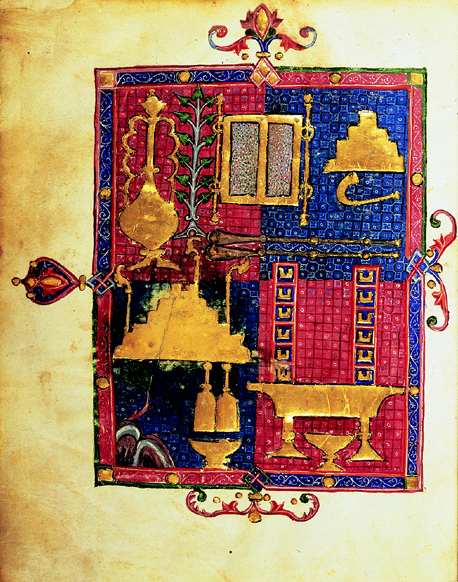Image Details

British Library, MS. ADD. 15250 F.3V
The temple vessels, painted in burnished gold, shine from the pages of this Hebrew Bible, known as the Duke of Sussex Spanish Bible and produced in Catalonia in the 1350s. Illuminations depicting the ritual lavers, horns, the shewbread table with 12 loaves piled in two stacks and other implements used in the desert Tabernacle and the Jerusalem Temple (Exodus 35; 1 Kings 7) often served as the frontispiece of Hebrew Bibles made in Spain.
Railing against false prophets, Jeremiah warns the Jerusalem priests to “give no heed” to those who promise that “the vessels of the House of the Lord [the Jerusalem Temple] shall shortly be brought back from Babylon.” Jeremiah continues, “If they are really prophets and the word of the Lord is with them, let them intercede with the Lord of Hosts not to let the vessels go to Babylon!” (Jeremiah 28:16–18).
But Jeremiah then makes a confusing and anticlimactic statement: “[The vessels] shall be brought to Babylon and there they shall remain, until I take note of them—declares the Lord of Hosts—and bring them up and restore them to this place” (Jeremiah 27:22). If the vessels are going to come back shortly, why all the fuss? And does this mean that the false prophets were right on this point?
Not surprisingly, this perplexing passage is found only in Edition II of Jeremiah. The verse was apparently added after the Babylonian Exile, when the Jews were allowed to return to Israel. The insertion of this sort of prophecy after the fact signals that Edition II is the later document.
